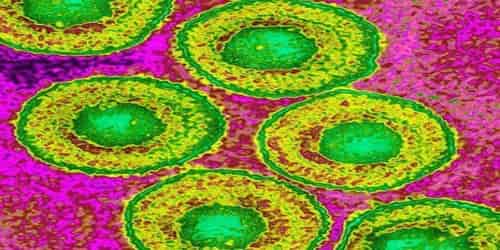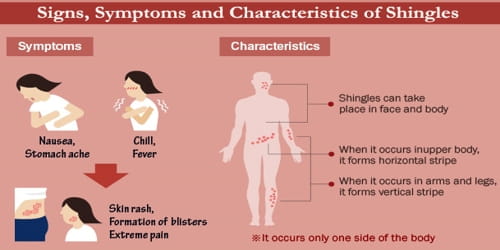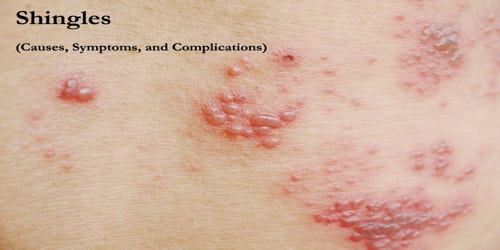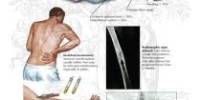Shingles (Causes, Symptoms, and Complications)
Definition: Shingles, also known as herpes zoster, is a viral disease characterized by a painful, blistering skin rash that affects one side of the body, typically the face or torso. It is caused by the varicella-zoster virus, the same virus that causes chickenpox. Anyone who has recovered from chickenpox can develop shingles.

The word shingles come from the Latin word cingulum, which means belt. In Arabic its name means “belt of fire”, while in Spanish it means “small snake”; in Hindi, it means “big rash” and in Norwegian, its name is helvetesild, literally “hell’s fire”.
After people had chickenpox, the virus lies inactive in nerve tissue near their spinal cord and brain. Years later, the virus may reactivate as shingles. Shingles are most common in people over the age of 50 years.
Once exposed, the virus can lay dormant for years. Most adults with the dormant virus never experience an outbreak of shingles or any further problems. However, in some individuals, it may reactivate multiple times.
The characteristic rash of shingles typically appears after an initial period of burning, tingling, itching, or stinging in the affected area. After a few days, the rash then appears in a stripe or band-like pattern along a nerve path (called a dermatome), affecting only one side of the body without crossing the midline. The rash erupts as clusters of small red patches that develop into blisters, which may appear similar to chickenpox. The blisters then break open and slowly begin to dry and eventually crust over.
Here are some key points about shingles:
- Each year in the U.S., there are an estimated 1 million cases of shingles.
- Around 1 in 3 people will develop shingles during their lifetime.
- Shingles is a painful infection of the nerve supplying an area of skin and are accompanied by a localized skin rash.
Diagnosis is typically based on a person’s signs and symptoms. The shingles vaccine reduces the risk of shingles by 50 to 90%, depending on the vaccine used. It also decreases rates of postherpetic neuralgia, and if shingles occur, its severity. It is estimated that about a third of people develop shingles at some point in their life. While more common among older people, children may also get the disease. The disease has been recognized since ancient times.

Causes, Sign, and Symptom: Shingles is caused by the varicella-zoster virus — the same virus that causes chickenpox. The varicella-zoster virus belongs to the Herpesviridae family. Only those who have previously had chickenpox can develop shingles later in life, and rarely, those who have received the varicella vaccine can develop shingles later in life.
After recovering from chickenpox, the virus remains in the body. It lies dormant in the central nervous system (CNS). The varicella-zoster virus belongs to a group of viruses called herpes viruses. This is why shingles is also known as herpes zoster. But the virus that causes chickenpox and shingles is not the same virus responsible for cold sores or genital herpes, a sexually transmitted infection.
A person with shingles can pass the varicella-zoster virus to anyone who isn’t immune to chickenpox. This usually occurs through direct contact with the open sores of the shingles rash. Once infected, the person will develop chickenpox, however, not shingles.
In most cases, it is not clear why the varicella-zoster virus begins multiplying to cause shingles. One suggestion is that shingles occur when something weakens the immune system, prompting the virus to reactivate.
Possible triggers include:
- older age
- some diseases, including certain cancers and HIV or AIDS.
- cancer treatments, such as chemotherapy and radiation therapy, as these lower a person’s resistance to disease
- stress or trauma
- medications, and especially immunosuppressive drugs, used by patients after an organ transplant
- children who had chickenpox in infancy or whose mothers had chickenpox late in pregnancy

The signs and symptoms of shingles usually affect only a small section of one side of the body. These signs and symptoms may include:
- Pain, burning, numbness or tingling
- Sensitivity to touch
- A red rash that begins a few days after the pain
- Fluid-filled blisters that break open and crust over
- Itching
Some people also experience:
- Fever
- Headache
- Sensitivity to light
- Fatigue
Shingles in children are often painless, but people are more likely to get shingles as they age, and the disease tends to be more severe. The shingles rash should fade after 2 to 4 weeks. But the skin underneath the rash might change color and always stay that way. The pain can last for months or years.
The prognosis for shingles is generally favorable, though some individuals can experience complications. The most common complication is postherpetic neuralgia, which is persistent nerve pain after the rash disappears.
Complications: Shingles cannot be passed from one individual to another.
Complications from shingles can include:
- Postherpetic neuralgia. For some people, shingles pain continues long after the blisters have cleared.
- Vision loss. Shingles in or around an eye (ophthalmic shingles) can cause painful eye infections that may result in vision loss.
- Neurological problems. Depending on which nerves are affected, shingles can cause an inflammation of the brain (encephalitis), facial paralysis, or hearing or balance problems.
- Skin infections. If shingles blisters aren’t properly treated, bacterial skin infections may develop.
Shingles are not spread through coughing or sneezing but through direct contact with fluid from the blisters. Before the blisters develop and after the crusts form, the person is not contagious. Shingles are less contagious than chickenpox. The risk of spreading the virus is low if the rash is covered.
Information Source:
















